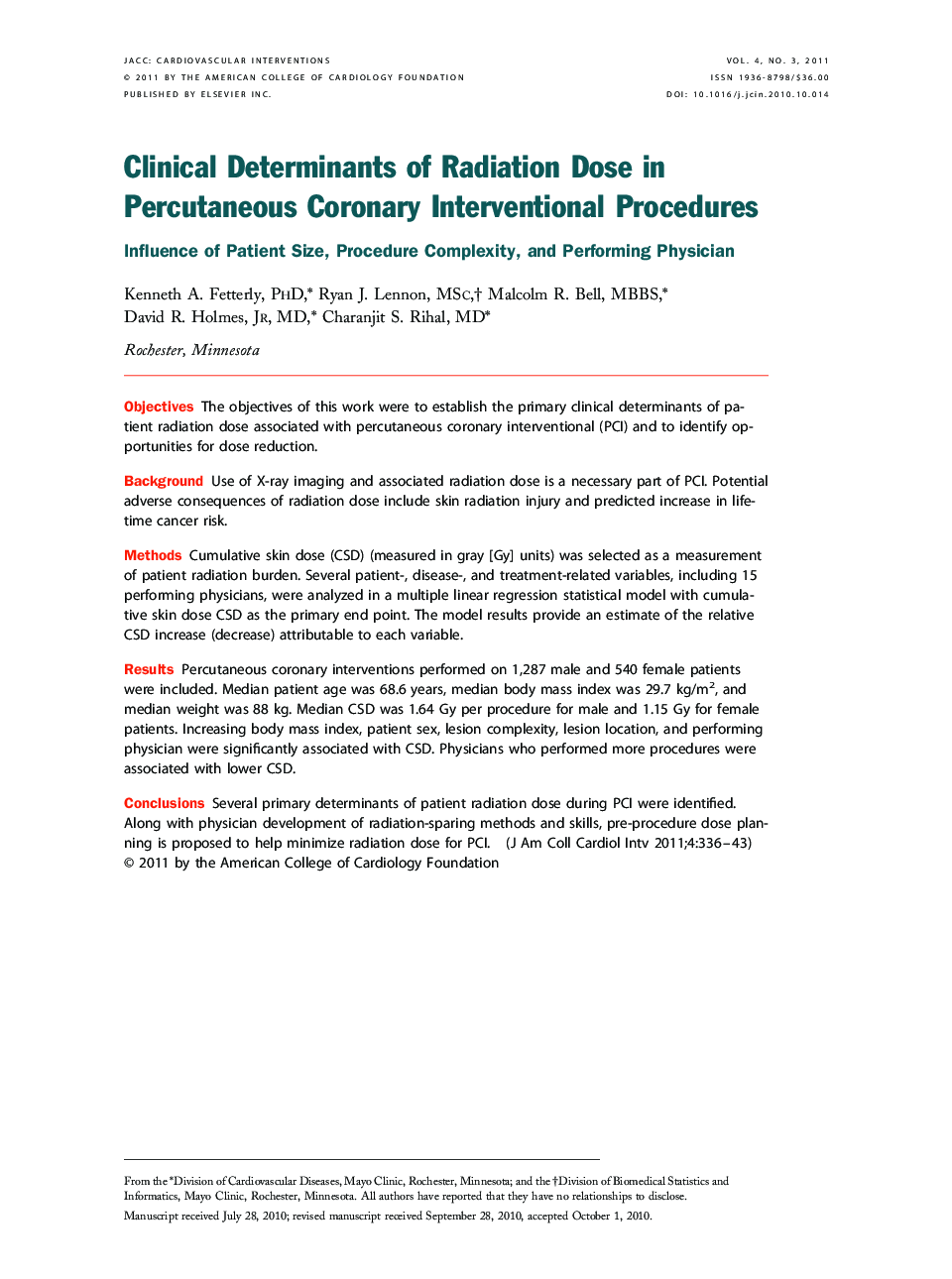| Article ID | Journal | Published Year | Pages | File Type |
|---|---|---|---|---|
| 2940882 | JACC: Cardiovascular Interventions | 2011 | 8 Pages |
ObjectivesThe objectives of this work were to establish the primary clinical determinants of patient radiation dose associated with percutaneous coronary interventional (PCI) and to identify opportunities for dose reduction.BackgroundUse of X-ray imaging and associated radiation dose is a necessary part of PCI. Potential adverse consequences of radiation dose include skin radiation injury and predicted increase in lifetime cancer risk.MethodsCumulative skin dose (CSD) (measured in gray [Gy] units) was selected as a measurement of patient radiation burden. Several patient-, disease-, and treatment-related variables, including 15 performing physicians, were analyzed in a multiple linear regression statistical model with cumulative skin dose CSD as the primary end point. The model results provide an estimate of the relative CSD increase (decrease) attributable to each variable.ResultsPercutaneous coronary interventions performed on 1,287 male and 540 female patients were included. Median patient age was 68.6 years, median body mass index was 29.7 kg/m2, and median weight was 88 kg. Median CSD was 1.64 Gy per procedure for male and 1.15 Gy for female patients. Increasing body mass index, patient sex, lesion complexity, lesion location, and performing physician were significantly associated with CSD. Physicians who performed more procedures were associated with lower CSD.ConclusionsSeveral primary determinants of patient radiation dose during PCI were identified. Along with physician development of radiation-sparing methods and skills, pre-procedure dose planning is proposed to help minimize radiation dose for PCI.
